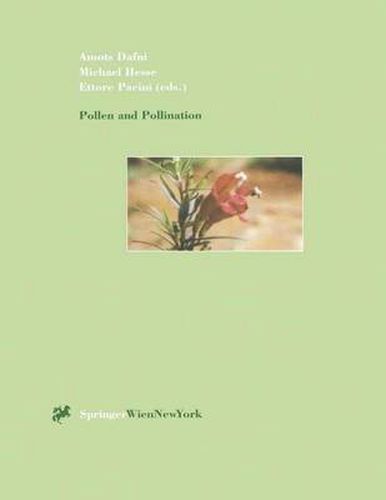Readings Newsletter
Become a Readings Member to make your shopping experience even easier.
Sign in or sign up for free!
You’re not far away from qualifying for FREE standard shipping within Australia
You’ve qualified for FREE standard shipping within Australia
The cart is loading…






This title is printed to order. This book may have been self-published. If so, we cannot guarantee the quality of the content. In the main most books will have gone through the editing process however some may not. We therefore suggest that you be aware of this before ordering this book. If in doubt check either the author or publisher’s details as we are unable to accept any returns unless they are faulty. Please contact us if you have any questions.
Pollen studies make important contributions nature, into three main themes: pollen struc to our knowledge in many interdisciplinary ture and constituents, pollen evolutionary arenas. Pollen identification is widely used in ecology and the pollen-pollinator interface. reconstruction of, e.g., vegetation, the climate Several papers overlap somewhat or are of the past, and plant biodiversity. Studies perhaps even somewhat contradictory and concerning pollen structure, size and form are reflect the author’s own ideas and experience. key issues in basic sciences, as, e.g., plant Some could be understood more deeply by taxonomy and evolution, but are also of consulting other closely related articles. The importance in applied fields as, e.g., plant reader is strongly referred to the respective breeding. In pollination studies pollen is literature list of each article. generally used specifically to identify food ofanther ripening and pollen The last steps development (Pacini) and the mature pollen sources of visitors and to reconstruct their foraging routes. Fewer have been devoted to wall structure (Hesse) are key factors to pollen collection mechanisms and to the struc understand pollen dispersal mechanisms in ture and content of pollen in relation to its biotic pollination (Stroo) as well as abiotic pollination (Ackerman). Pollen size, shape, function.
$9.00 standard shipping within Australia
FREE standard shipping within Australia for orders over $100.00
Express & International shipping calculated at checkout
This title is printed to order. This book may have been self-published. If so, we cannot guarantee the quality of the content. In the main most books will have gone through the editing process however some may not. We therefore suggest that you be aware of this before ordering this book. If in doubt check either the author or publisher’s details as we are unable to accept any returns unless they are faulty. Please contact us if you have any questions.
Pollen studies make important contributions nature, into three main themes: pollen struc to our knowledge in many interdisciplinary ture and constituents, pollen evolutionary arenas. Pollen identification is widely used in ecology and the pollen-pollinator interface. reconstruction of, e.g., vegetation, the climate Several papers overlap somewhat or are of the past, and plant biodiversity. Studies perhaps even somewhat contradictory and concerning pollen structure, size and form are reflect the author’s own ideas and experience. key issues in basic sciences, as, e.g., plant Some could be understood more deeply by taxonomy and evolution, but are also of consulting other closely related articles. The importance in applied fields as, e.g., plant reader is strongly referred to the respective breeding. In pollination studies pollen is literature list of each article. generally used specifically to identify food ofanther ripening and pollen The last steps development (Pacini) and the mature pollen sources of visitors and to reconstruct their foraging routes. Fewer have been devoted to wall structure (Hesse) are key factors to pollen collection mechanisms and to the struc understand pollen dispersal mechanisms in ture and content of pollen in relation to its biotic pollination (Stroo) as well as abiotic pollination (Ackerman). Pollen size, shape, function.